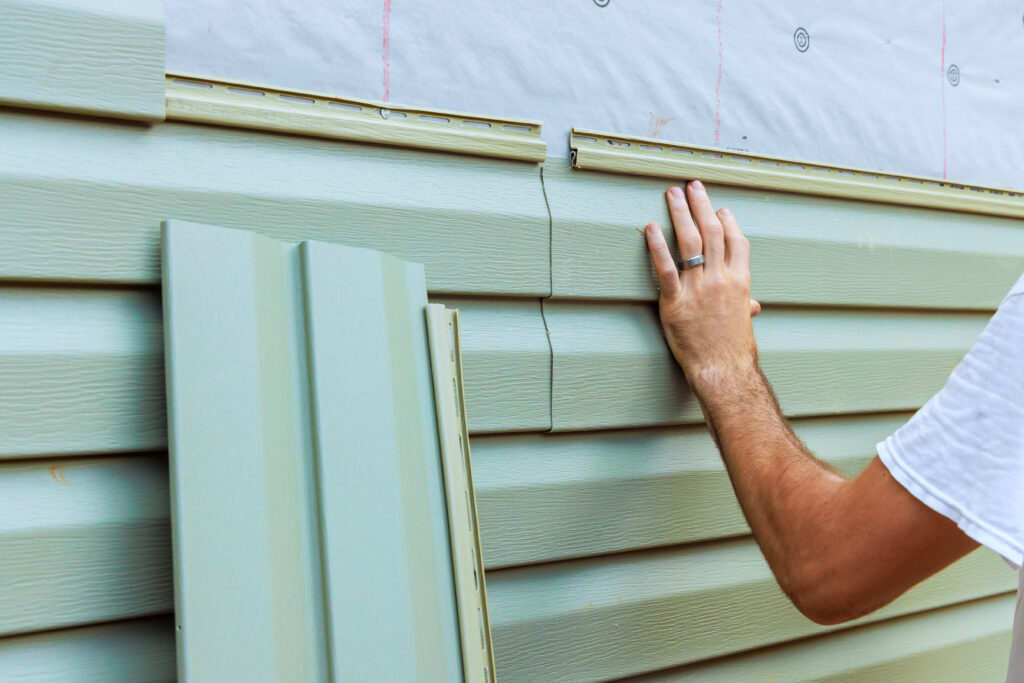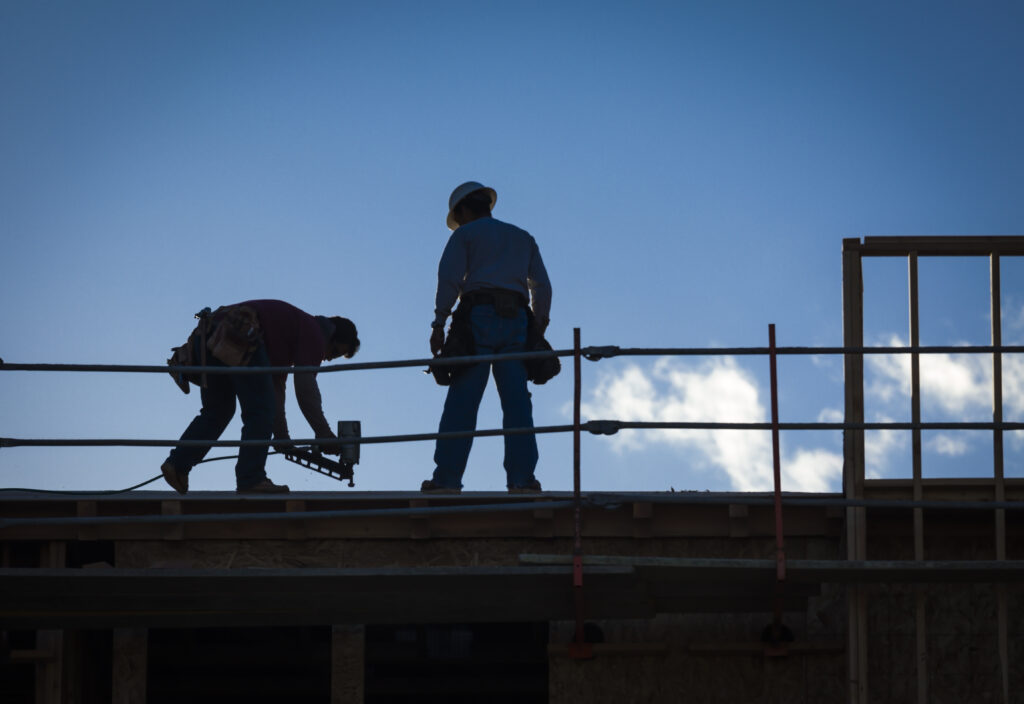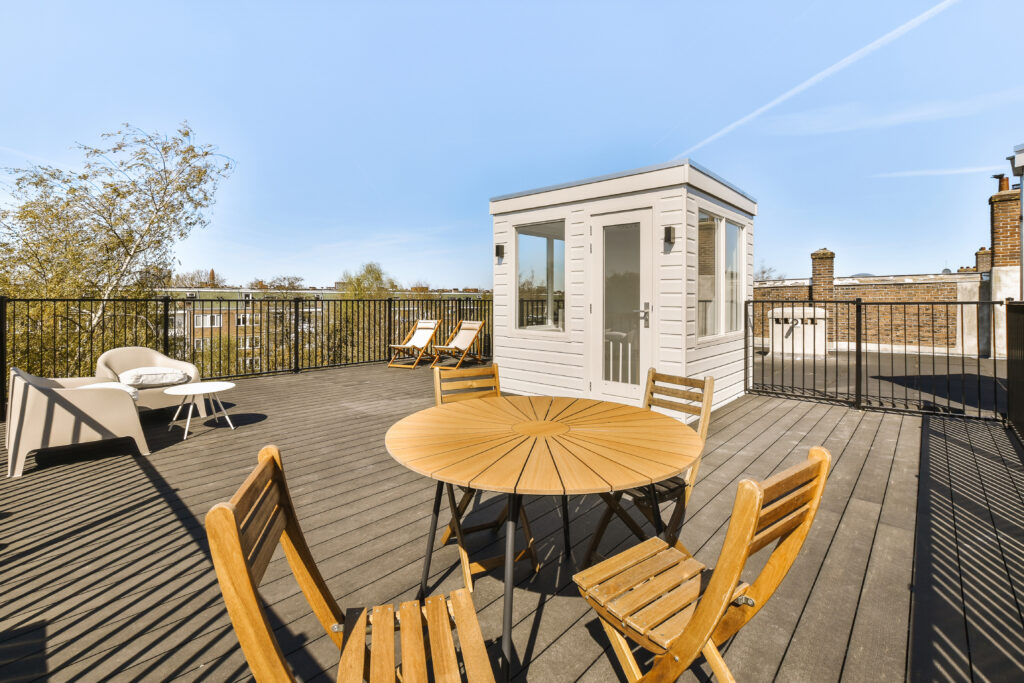1. Asphalt Shingles: The Classic Choice
Best For: Budget-friendly, traditional style, and durability.
Average Lifespan: 15–30 years
Asphalt shingles are by far the most common roofing material in the U.S., and for good reason. They’re affordable, come in a variety of styles and colors, and are relatively easy to install. Asphalt shingles are made from a fiberglass mat covered with asphalt and granules, offering a good balance of protection and cost-effectiveness. These shingles are durable enough to withstand most weather conditions, including rain, snow, and wind.
Benefits:
- Affordable: Great for homeowners on a budget.
- Wide variety of styles: Available in many colors and textures to complement your home’s style.
- Easy to repair: Asphalt shingles are relatively simple to fix if damaged.
- Energy-efficient options: Cool roof shingles can help reduce energy costs by reflecting sunlight.
Considerations:
Shorter lifespan compared to some other materials.
Can be damaged by extreme weather conditions like hail or high winds.
2. Metal Roofing: The Durable and Energy-Efficient Option
Best For: Long-term durability, energy savings, and modern aesthetic.
Average Lifespan: 40–70 years
Metal roofing has gained popularity in recent years due to its impressive durability and energy efficiency. Available in materials like aluminum, steel, and copper, metal roofs are highly resistant to extreme weather conditions, including heavy snow, hail, and high winds. Metal roofing also reflects heat, keeping your home cooler in the summer and reducing energy costs.
Benefits:
- Long lifespan: Metal roofs can last 40–70 years, much longer than asphalt shingles.
- Energy-efficient: Reflects heat, reducing cooling costs.
- Fire-resistant: Metal is non-combustible, providing added safety.
- Eco-friendly: Often made from recycled materials and fully recyclable at the end of its lifespan.
Considerations:
Higher upfront cost compared to asphalt shingles.
Can be noisy during heavy rain or hail unless properly insulated.
3. Slate Roofing: The Timeless, Elegant Option
Best For: Historic homes, premium aesthetics, and long-term investment.
Average Lifespan: 50–100 years
Slate roofing is one of the most elegant and long-lasting roofing materials available. Made from natural stone, slate offers unparalleled durability and a distinct, timeless look. While slate roofs are often seen on high-end or historic homes, they are a premium option that requires professional installation and can be more expensive.
Benefits:
- Exceptional durability: Slate roofs can last a century or more with proper care.
- Aesthetic appeal: Provides a sophisticated, natural look that’s hard to replicate.
- Fire-resistant: Slate is naturally fireproof.
- Low maintenance: Once installed, slate requires minimal upkeep.
Considerations:
- High cost: Slate roofing is one of the most expensive options available.
- Heavy weight: Slate is very heavy, requiring strong support structures.
Difficult to install and repair: Requires professional installation and specialized knowledge for repairs.
4. Wood Shingles & Shakes: The Natural Beauty
Best For: Aesthetic charm, eco-friendliness, and traditional design.
Average Lifespan: 20–40 years
Wood shingles and shakes are a popular choice for homeowners who want a natural, rustic look. Shingles are machine-cut for a uniform appearance, while shakes are hand-split for a more textured, irregular look. These roofs are typically made from cedar, redwood, or pine, offering an attractive, earthy appearance. Wood roofing provides good insulation and is eco-friendly if sourced responsibly.
Benefits:
Aesthetic appeal: Wood provides a unique, natural charm that complements many home styles.
Insulating: Wood naturally provides insulation, keeping your home cooler in summer and warmer in winter.
Environmentally friendly: Wood is a renewable resource, and there are sustainable options available.
Considerations:
Maintenance: Wood shingles and shakes require more maintenance to prevent rot, mold, and insect infestations.
Shorter lifespan: Wood roofing doesn’t last as long as materials like metal or slate.
Vulnerable to fire: Wood is flammable, though fire-resistant treatments are available.
5. Clay & Concrete Tiles: The Durable, Mediterranean Look
Best For: Warm climates, historic or Mediterranean-style homes, and long-term durability.
Average Lifespan: 50–100 years
Clay and concrete tile roofs are known for their distinct appearance and durability. Commonly found in Mediterranean or Spanish-style homes, these tiles are highly durable and provide excellent insulation. While they’re particularly well-suited to hot, dry climates, they can also be used in other areas as long as the roof structure can support the heavy weight of the tiles.
Benefits:
- Long lifespan: Clay and concrete tiles can last 50–100 years.
- Fire-resistant: Both materials are non-combustible.
- Energy-efficient: The tiles provide excellent insulation, reducing cooling costs in hot climates.
- Low maintenance: Once installed, these tiles require minimal upkeep.
Considerations:
- High cost: Clay and concrete tiles are more expensive than other materials.
- Heavy weight: Requires a strong roof structure to support the weight of the tiles.
- Fragility: The tiles can break under heavy impact (such as falling branches).
Which Roofing Material Is Right for You?
Choosing the best roofing material for your home ultimately depends on your budget, the climate in your area, the look you desire, and how long you plan to stay in your home. LZ Improvement Inc. has the experience to help you make the right decision based on your specific needs.
If you're looking for an affordable, durable option, asphalt shingles might be the right choice.
For a long-lasting, low-maintenance roof, consider metal roofing.
If aesthetics and longevity are your priority, slate roofing offers a timeless solution.
For a natural, traditional look, wood shingles or shakes may be perfect.
If you live in a hot climate and love Mediterranean or Spanish-style architecture, clay or concrete tiles could be ideal.




